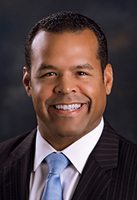
An Old-fashioned Solution to a New Problem
At Issue
By Mike Wallace, NJBIA Vice President, Government Affairs On Nov 2, 2018
Apprenticeships are an old-fashioned idea getting a lot of new attention. Trade unions have long operated such training programs, but now, governments at both the state and national level are broadening the idea to include more jobs outside of the construction trades.
Last year, an executive order signed by the president directed the U.S. Departments of Labor, Commerce, and Education to promote apprenticeships and pre-apprenticeship programs to companies, nonprofit organizations, unions, trade and industry groups, and joint labor-management organizations.
In New Jersey, Gov. Phil Murphy created the New Jersey Apprenticeship Network to create new partnerships between businesses, labor and education to train people for jobs that are already available. At a joint meeting of NJBIA’s Employment and Labor, and Education and Workforce Development Policy Committees in September, state Labor Commissioner Robert Asaro-Angelo laid out some of the details, even as the program is still ramping up.
With a $10-million appropriation, the Labor Department is seeking businesses with which to partner. The network can help those businesses willing to put in the time, money and effort required to run a formal on-the-job training program.
Apprentices receive a combination of on-the-job training and related technical instruction typically over the course of four years. They have the opportunity to receive wages while they work and receive pay increases when they meet benchmarks for skill attainment. The program involves 2,000 hours a year of on-the-job training and a recommended minimum of 144 hours of classroom instruction.
Under Murphy’s plan, education and higher education are going to play a bigger role in workforce training by linking education with students’ career paths in high school as well as college.
New Jersey Commissioner of Education Dr. Lamont Repollet and Secretary of Higher Education Dr. Zakiya Smith Ellis both say the original purpose of education systems was to support industry, and they want schools to focus on it again so their graduates are not just well educated, but prepared for the working world.
This is an interesting aspect of the program. Long before this labor shortage, employers had complained about entry-level employees who lacked work readiness skills that are required for any job. Apprenticeships also provide necessary soft skills such as critical thinking and how to work as part of a team, in addition to providing students with good-paying jobs and valuable academic and technical skills. If done right, apprentices will receive the certifications or other credentials they need for a career and will be better equipped to transition from the classroom to the working world.
There are far too many jobs going unfilled because employers cannot find the workers with the necessary skills to fill open positions. The apprenticeship network, although still in its infancy, is a positive step toward closing the skills gap to ensure New Jersey businesses have the workforce needed to continue to grow and be successful.
If you are interested in apprenticeships, go to www.nj.gov/apprenticeships to learn more.
Related Articles:






